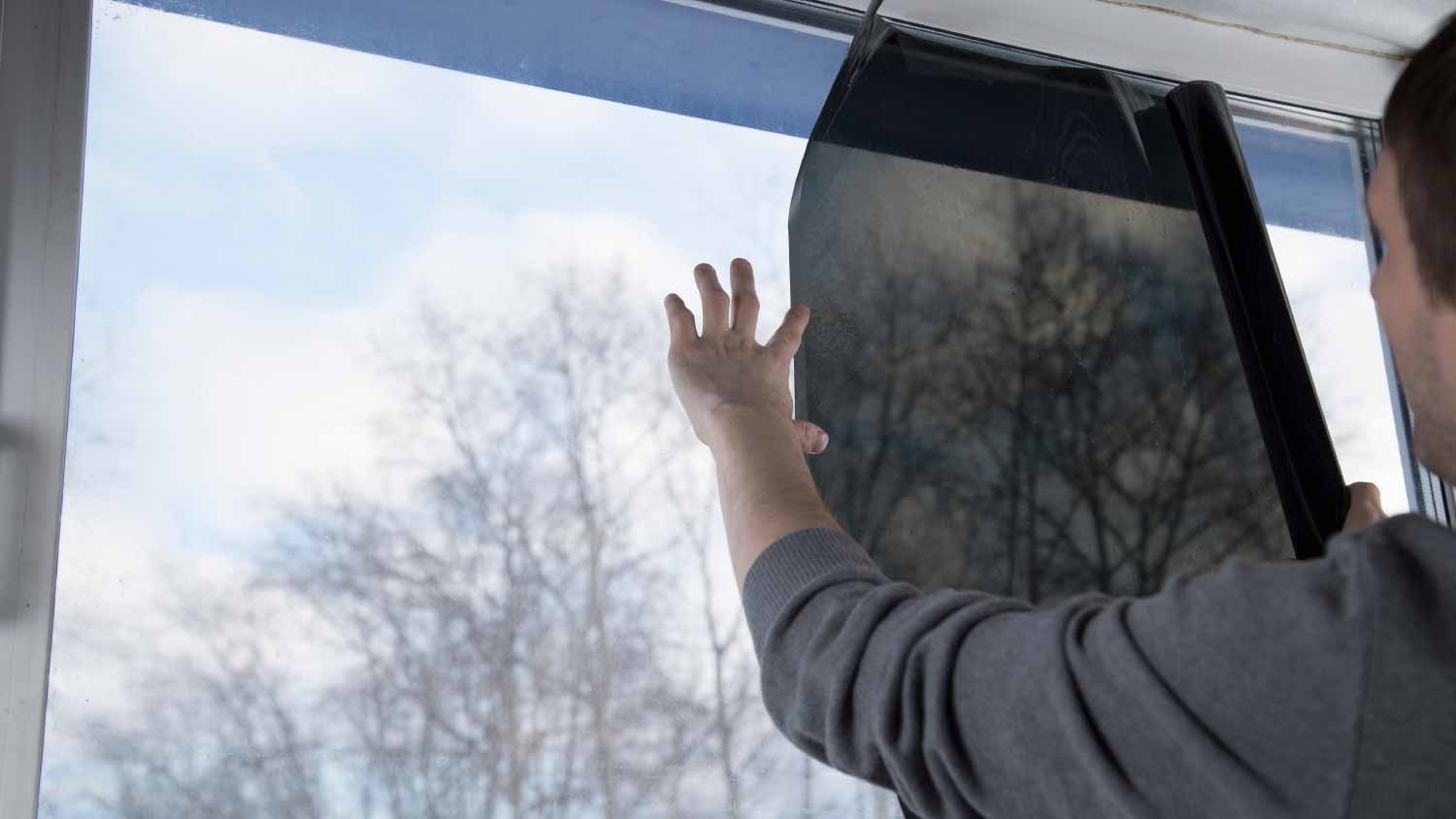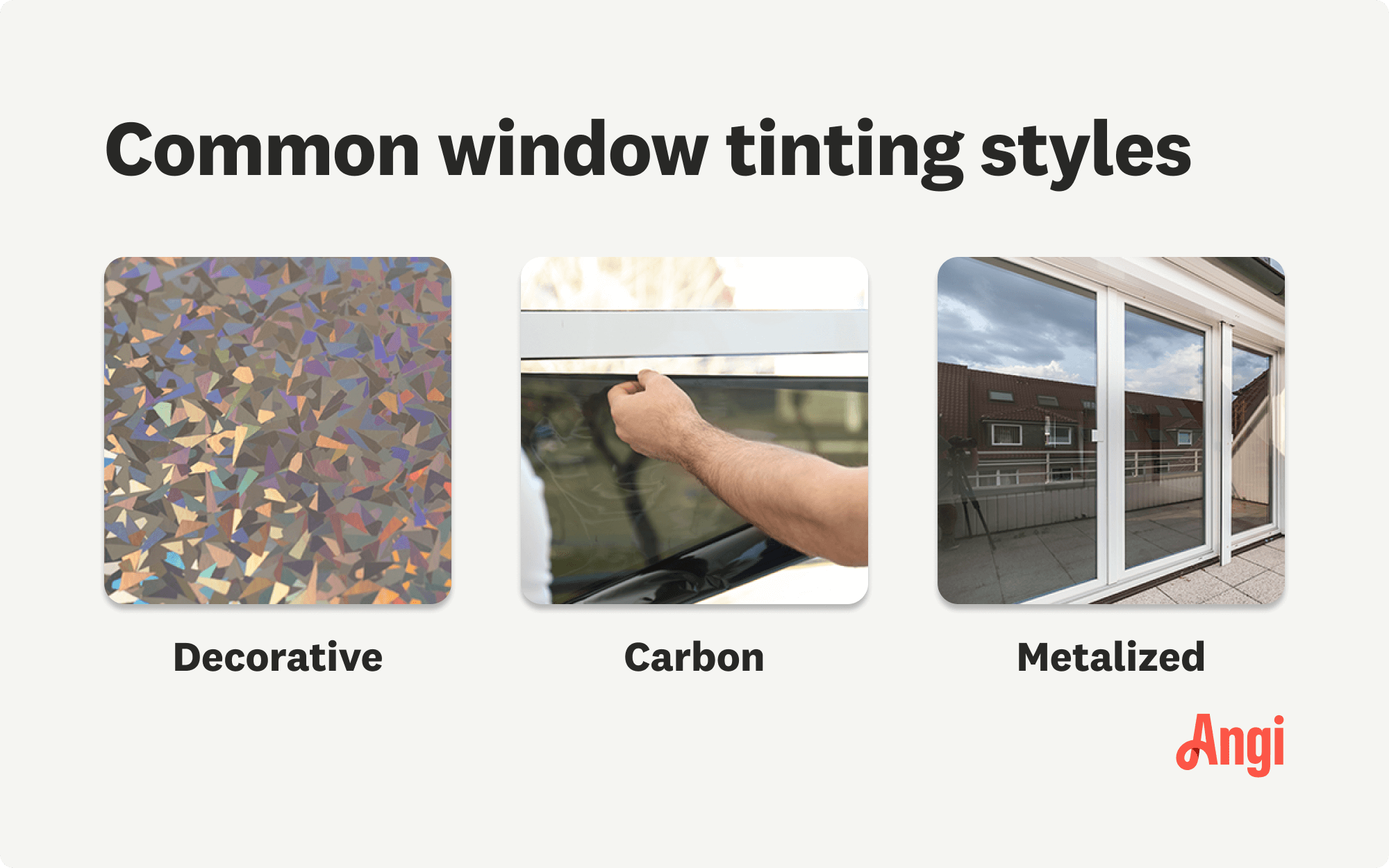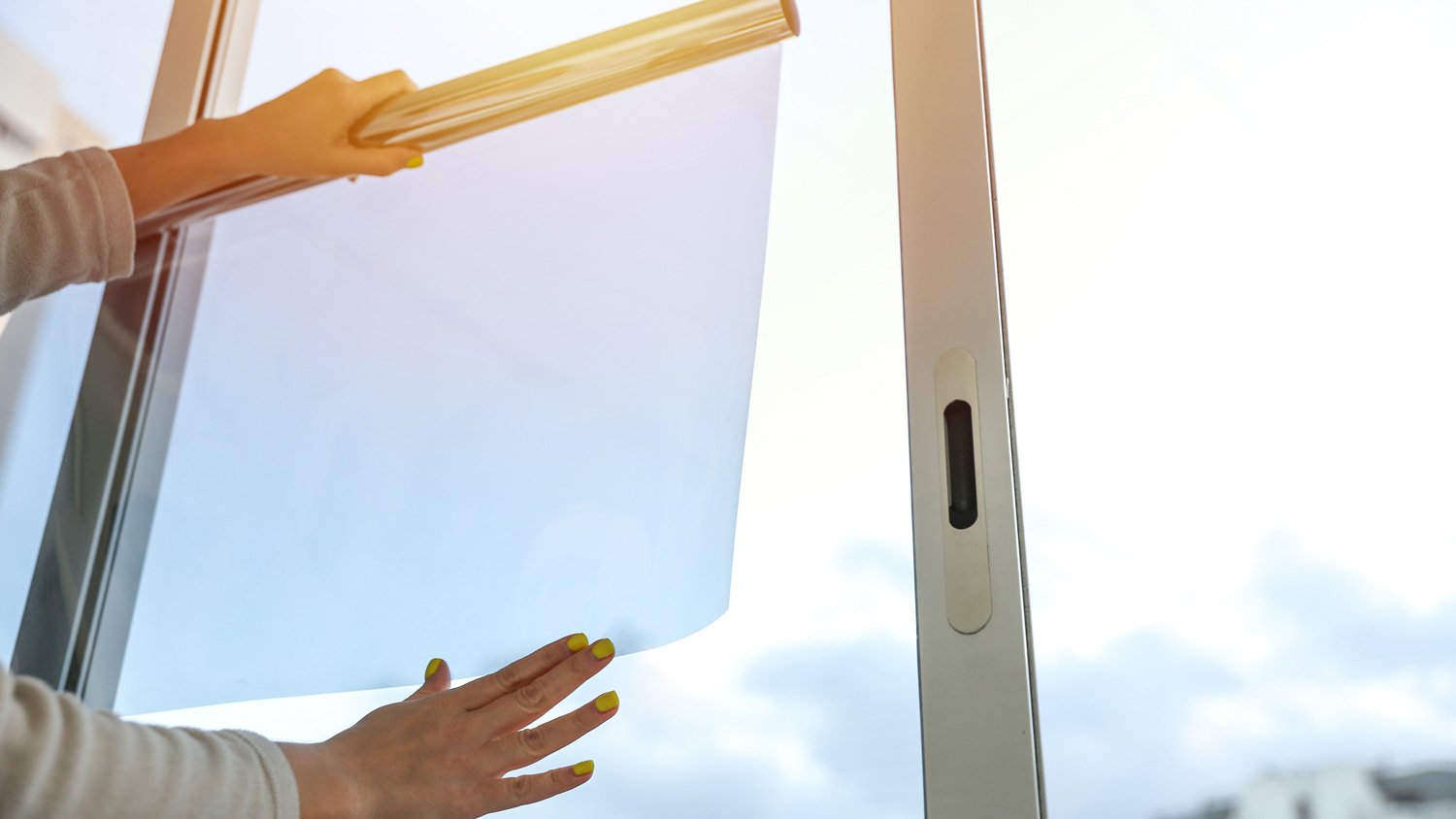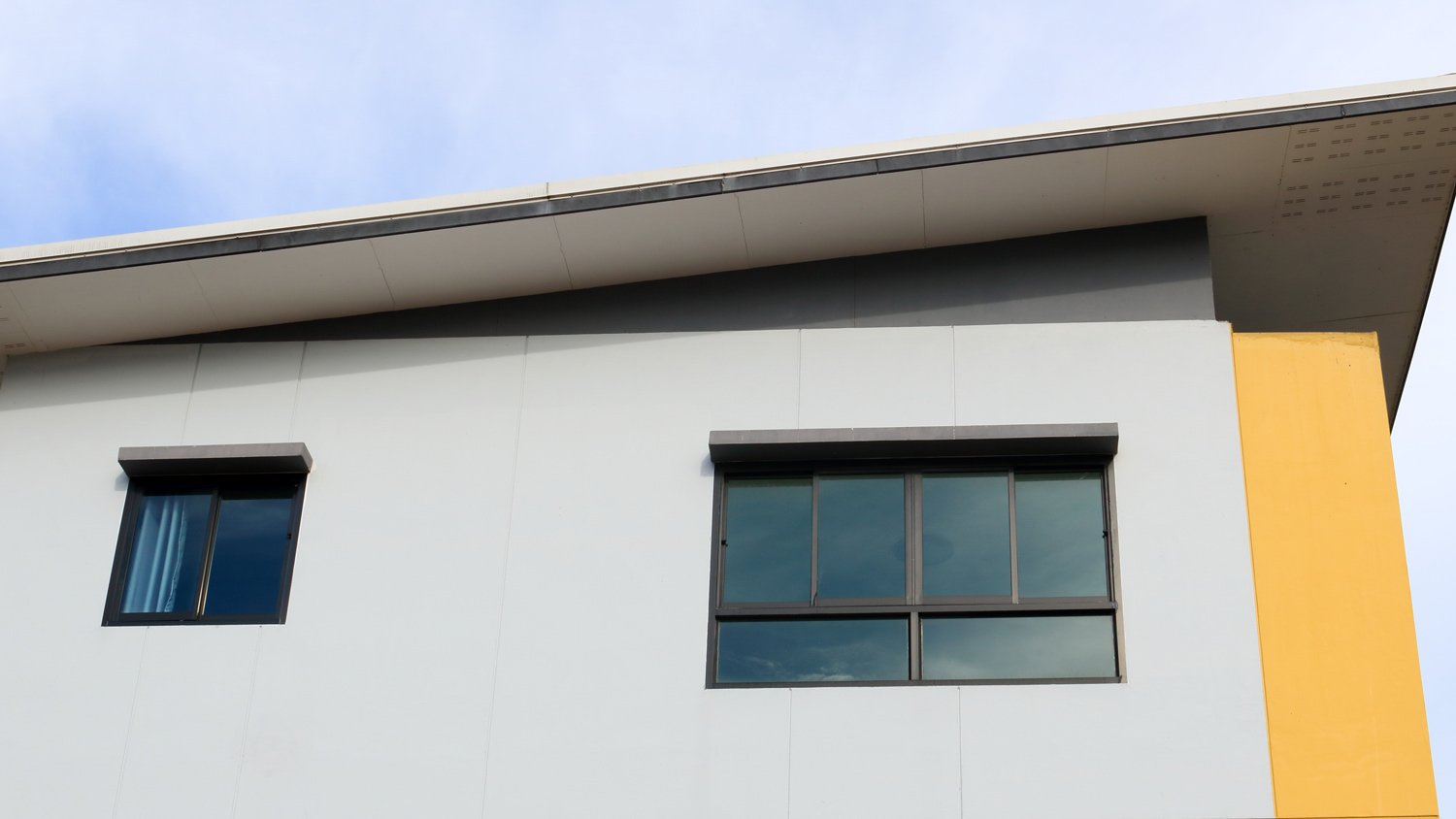
Discover window security film installation costs. Learn about average prices, cost factors, and ways to save on your home security upgrade.
Home window tinting costs $611 on average, with most pricing depending on window size, film type, and labor rates


Home window tinting costs depend on film type, window size, and local labor rates.
Window tinting improves energy efficiency and privacy throughout your home.
Professional installation costs $4 to $20 per square foot and should result in a longer-lasting tint and greater performance benefits.
Many films block UV rays, reduce glare, and can help protect your furniture from fading.
This article was created using automation technology and thoroughly fact-checked and edited by an Angi Editor in accordance with our AI policy.
Home window tinting cost averages $611, with an average range from $316 to $941. Prices vary based on the number and size of windows, film type, and installation complexity. Expect to pay $5 to $20 per square foot, including both materials and labor, for professional window tinting. Tinting your windows can make your home more comfortable and energy efficient. In this guide, we’ll break down what influences your total cost, compare types of film, and help you decide whether to hire a pro or try it yourself.

The total area of glass you plan to tint is one of the biggest factors in your home window tinting cost. Expect to pay $7 to $15 per square foot on average or between $45 and $660 per window. Larger windows or a greater number of windows both increase your total price. Standard windows are less expensive to tint than oversized picture windows, custom shapes, or specialty glass like skylights. Multi-story homes or those with hard-to-reach windows may also see higher labor costs due to increased time and complexity.
Tinting all windows in your home, rather than only those facing the sun or street, will increase materials and labor expenses. Specialty window shapes or unusually large panes, such as bay windows or arched glass, can further raise your price, as can multi-pane or divided light windows that require more precise installation.
| Window Size | Size | Tinting Cost |
|---|---|---|
| Standard window | Single/double-hung, 24x36 in. | $300–$900 |
| Large/picture window | Fixed, 48x60 in. or larger | $400–$1,200 |
| Custom/arched window | Unique shapes, specialty glass | $500–$1,500 |
Choosing the right type of window film is essential, as it directly impacts your home window tinting cost. The most popular options include solar or UV-blocking films, privacy films, decorative designs, security or shatter-resistant films, insulating (low-E) films, mirrored and frosted finishes, and anti-glare coatings. Each film type has a specific purpose, and the price varies widely depending on its features and performance.
Solar and UV films are designed to reduce heat and block harmful rays, helping with energy efficiency. Decorative films offer custom looks or patterns, while privacy films limit visibility from outside. Security films add strength to your windows, and insulating films help maintain indoor temperatures. Mirrored and frosted films enhance privacy and style, and anti-glare films are popular for rooms with screens or devices.
| Film Type | Description | Cost per Sq. Ft. | Pros | Cons |
|---|---|---|---|---|
| Solar/UV | Blocks heat and UV rays | $5–$14 | Reduces glare, energy savings, UV protection | Limited privacy |
| Decorative | Patterns, colors, or frosted designs | $6–$15 | Custom look, privacy, style options | Can be expensive, less heat reduction |
| Privacy | Obscures view from outside | $7–$12 | Enhances privacy, some UV protection | May reduce natural light |
| Security | Shatter-resistant, adds strength | $8–$20 | Improves safety, deters break-ins | Higher cost, less visual variety |
| Insulating | Improves thermal efficiency | $10–$20 | Energy savings, comfort | Costly, may affect window warranties |
| Mirrored | Reflective exterior for privacy and heat | $8–$15 | Privacy, glare reduction, modern appearance | Can darken interiors |
| Frosted | Opaque finish for privacy | $6–$13 | Privacy, stylish, diffuses light | No outside view |
| Anti-glare | Reduces glare for screens and devices | $7–$14 | Improves comfort, protects electronics | Limited privacy benefits |
Home window tinting cost can change significantly depending on where you live and where the windows are located in your home. In some areas, labor and material costs are higher due to demand, climate, or local regulations. Urban regions and cities with extreme weather have higher prices than rural or temperate areas. Labor rates also fluctuate between states and metropolitan areas.
Within your home, costs can vary depending on the room and accessibility. Tinting large windows in living rooms or sunrooms may cost more than bedrooms or basements. Hard-to-reach windows, such as those on upper floors or behind landscaping, require additional setup and labor, which increases the total price.

Several factors influence your total home window tinting cost. Understanding these can help you plan your budget and select the right options for your home.
Window tinting specialists, general contractors, and handyman services all install window film, but costs differ. Labor is charged per square foot, per window, or hourly. Expect labor rates ranging from $5 to $10 per square foot. Some pros charge minimum service fees or trip charges, especially for small projects. Rates can be higher in cities or areas with high demand. Installers with strong reputations or extensive experience may charge more, but they deliver better, longer-lasting results.
Most residential window tinting does not require permits, but exceptions exist. Some local codes, historic districts, or homeowners associations (HOAs) have restrictions or require approval, especially for exterior-facing films or mirrored tints. Always check with your city or HOA before starting your project.
Specialty films, such as those with custom patterns, colors, or logos, add to your home window tinting cost. Smart or switchable films, which allow you to change opacity with a switch, are more expensive—$25 to $200 per square foot. Films with enhanced UV-blocking, shatter resistance, or anti-graffiti properties also cost more. Upgrades like scratch-resistant coatings improve durability but increase the final bill.
Complex installations—such as windows with unique shapes, multiple panes, or curved glass—require more labor and skill, raising the price. Site prep, such as removing old film or cleaning, might add to your costs. Delivery or travel fees apply for remote locations, and some pros charge for post-installation cleanup or design consultations.
A new window tint will take on average one to two weeks to fully cure. During this time, follow the manufacturer's guidelines closely when it comes to cleaning and using the window.
While the main expenses are film and labor, other costs can arise.
Many window films come with a manufacturer’s warranty covering issues like fading, bubbling, or peeling. Some installers also offer labor warranties. Extended or premium warranties may cost more but can provide greater peace of mind, especially for high-end films. Warranties last five to 15 years, depending on the film type.
Window tinting can lower your utility bills by reducing heat gain and loss, especially during extreme weather. Over time, this can offset the initial installation cost. You may also see reduced wear on your HVAC system, lowering maintenance needs.
Tinted windows require gentle cleaning with non-abrasive products. Avoid ammonia-based cleaners, which can damage the film. Most films last five to twenty years, depending on type and exposure. Occasional inspections or touch-ups may be needed, with minor repairs costing $20 to $75 per window.
Sales tax applies to both materials and installation in many areas. Rates vary regionally, so check your local tax rate. In some states, labor may be tax-exempt.
Some homeowners insurance policies cover window tinting, especially if it is professionally installed and boosts security. However, DIY jobs or unapproved films may not be covered. Always confirm with your insurance provider to ensure proper documentation and coverage.
When deciding between DIY and professional installation, it’s important to weigh both the costs and the results.
DIY window tinting kits are ideal for small projects or single windows. You’ll also need tools like a squeegee, utility knife, spray solution, and a ladder for higher windows. While DIY can save money upfront, it requires time, precision, and patience. Mistakes such as bubbles, creases, or misalignment can lead to wasted film and added costs if you need to redo the job or hire a professional to fix errors.
Hiring a professional costs more, but the results are superior in appearance and longevity. Pros have access to commercial-grade films, offer warranties, and are experienced in handling complex windows or specialty films. Professional installation is strongly recommended for large projects, upper-story windows, or when using advanced or security films. Safety is another factor—working on ladders or handling large glass panes carries risk best managed by trained experts.
Not all window tinting problems require full replacement. In some cases, repairs are an option.
Signs that your window film needs attention include bubbling, peeling, fading, discoloration, or scratches. If damage is limited to a small area, a spot repair may suffice. However, if the film is old, extensively damaged, or no longer effective, full replacement is the best choice. Warranty status and film age help determine the best approach—outdated or out-of-warranty films are replaced rather than repaired.
Repairing a small section costs $20 to $75 per window or $3 to $8 per square foot, depending on location and film type. Removing and replacing tint on a single window runs $50 to $300, while a whole-home replacement matches the original installation range of $300 to $1,200. If repair costs approach half the price of replacement, replacement is recommended for better long-term value.
Window tinting can add value to your home in several ways.
The estimated ROI for home window tinting ranges from 30% to 80%, depending on film type, climate, and usage. Energy savings from reduced heating and cooling bills are the main driver, and some homeowners recoup the cost within a few years.
Tinted windows increase comfort by regulating temperature, enhance privacy and security, and add modern style. They also protect furnishings, flooring, and artwork from UV damage, helping preserve your home’s interior. Safety films improve shatter resistance, making your home more secure. Efficiency films regulate indoor temperature, reducing strain on your HVAC system. Decorative and privacy films can make your living spaces more attractive and accessible for everyone in the home.
Compared to other energy-saving projects like insulation or new windows, window tinting offers a lower upfront cost and a relatively quick payback, especially in sunny or hot climates. Factors such as window orientation, film quality, and local weather influence the actual return.
Save on home window tinting costs with these budgeting tips:
Get multiple quotes from local window tinting pros to compare pricing.
Tint only the most sun-exposed or high-impact windows.
Choose standard films over premium or custom options.
Schedule window tinting installation during off-peak seasons for potential discounts.
Prepare windows in advance (cleaning, removing old film) to reduce labor time.
Consider bundling window tinting with other home improvement projects for savings.
Home is the most important place on earth, which is why Angi has helped more than 150 million homeowners transform their houses into homes they adore. To help homeowners with their next project, Angi provides readers with the most accurate cost data and upholds strict editorial standards. We’ve surveyed thousands of real Angi customers about their project costs to develop the pricing data you see, so you can make the best decisions for you and your home. We pair this data with research from reputable sources, including the U.S. Bureau of Labor Statistics, academic journals, market studies, and interviews with industry experts—all to ensure our prices reflect real-world projects.
Want to help us improve our cost data? Send us a recent project quote to [email protected]. Quotes and personal information will not be shared publicly.
From average costs to expert advice, get all the answers you need to get your job done.

Discover window security film installation costs. Learn about average prices, cost factors, and ways to save on your home security upgrade.

Our guide walks you through how to remove window tint from home windows, including peeling the film and wiping away the adhesive.

Window tints can increase your home's privacy, efficiency, and comfort. Here are eight types of window tints and the pros and cons of each.

Can I tint my house windows? Home window tinting is a small upgrade that can yield major benefits. Here’s everything you need to know before taking the plunge.

Unleash your inner DIY maven and learn how to tint windows at home. We share the best ways to achieve flawless results. Grab your squeegee!